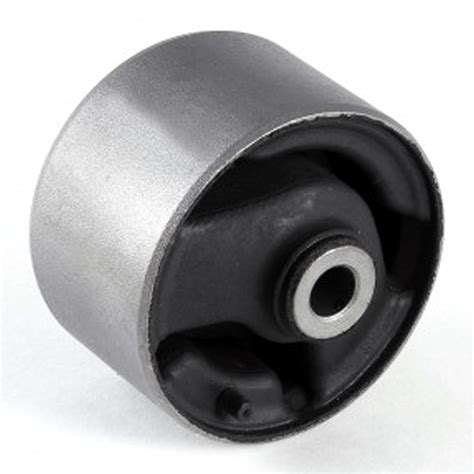Discover essential insights about engine bushing mounts, including signs of failure, DIY tips, and the advantages of upgrading to polyurethane bushings.The engine bushing mount is a crucial component of your vehicle’s overall performance, yet it’s often overlooked until issues arise. This essential part acts as a cushion between the engine and the chassis, reducing vibrations and ensuring a smoother ride. However, like all components, bushing mounts can wear down over time, leading to various issues that can affect your vehicle’s handling and comfort. In this blog post, we will explore what an engine bushing mount is, highlight the common signs of failure, discuss the impacts of a worn mount, provide DIY inspection and replacement tips, and explain the benefits of upgrading to polyurethane bushings. Whether you’re a seasoned mechanic or a car enthusiast, understanding this component can help you maintain your vehicle’s performance and longevity. Let’s dive in!
What is an engine bushing mount?
The engine bushing mount is a critical component of a vehicle’s engine support system, designed to dampen vibrations and provide a stable foundation for the engine, ensuring that it operates smoothly without transmitting excessive vibrations to the vehicle’s chassis. These mounts are typically constructed from a blend of rubber or polyurethane materials, which allow for a certain degree of flexibility while absorbing the constant vibrations generated by the engine’s operation, thus enhancing ride comfort and vehicle handling.
Moreover, the engine bushing mount plays a significant role in reducing noise levels within the cabin, enabling a quieter driving experience, as it acts as a barrier against the loud engine sounds, allowing for a more pleasant journey. In addition, these mounts are strategically positioned in the engine bay to maintain the engine’s alignment and stability under various driving conditions, which is essential for ensuring optimum performance and longevity of the engine itself, further contributing to the overall safety and reliability of the vehicle.
It is important to note that the proper functioning of the engine bushing mount is crucial for maintaining the vehicle’s structural integrity; if the mounts are worn out or damaged, they can lead to misalignment of the engine, resulting in further mechanical issues and potentially expensive repairs. Therefore, understanding the significance of this component is vital for vehicle owners who wish to preserve the health of their engine and maintain a smooth, efficient ride.
Common signs of a failing bushing mount
The bushing mount serves a critical role in the overall performance and stability of a vehicle, acting as a cushion between the engine and the vehicle’s frame to reduce vibrations and noise, and when it begins to fail, there are several noticeable signs that can alert a driver to the issue, thereby preventing further mechanical failure and ensuring a safer driving experience.
One of the most prevalent indicators of a failing bushing mount is an increase in vibration felt through the steering wheel and the vehicle’s interior, which often occurs when the bushing has worn out and no longer effectively dampens the engine’s vibrations, leading to a more pronounced transfer of those vibrations into the cabin, thus making the ride feel more harsh and unstable.
Another significant warning sign to look out for is an unusual clunking or rattling noise that may arise during acceleration or deceleration, which can often be attributed to the engine shifting more than it should due to insufficient support from a deteriorating bushing mount; additionally, visual inspection of the engine bay may reveal visible cracks or separation in the bushing itself, further conf
The impact of a worn bushing mount
When automobile enthusiasts and mechanics discuss vehicle performance and ride quality, they often overlook the crucial role that the engine bushing mount plays in maintaining both the structural integrity of the engine and the overall smoothness of the driving experience; this component serves as a vital link between the engine and the vehicle chassis, dampening vibrations and absorbing shocks that arise from road imperfections and engine operation.
A worn bushing mount can lead to a series of negative consequences that affect not only the vehicle’s functionality but also the safety of the passengers, manifesting in troubling signs such as excessive engine vibrations felt through the cabin, misalignment issues that could result in a misfiring engine, and even irregular wear on other components, which could lead to costly repairs down the line.
Moreover, the impact of a worn bushing mount is not merely limited to the immediate discomfort it creates, as it can significantly affect fuel efficiency and emissions, ultimately leading to an increase in operational costs for the driver; therefore, recognizing the importance of timely inspections and replacements of these mounts can make a significant difference in the long-term performance and reliability of the vehicle.
DIY inspection and replacement tips
When it comes to maintaining the engine bushing mount in your vehicle, conducting a DIY inspection can save you both time and money, while also ensuring that your vehicle runs smoothly and efficiently by identifying any potential issues early on. One of the first steps in this process involves gathering the necessary tools, which may include a jack, jack stands, a torque wrench, and a pry bar, as well as ensuring that you have a clear understanding of the location of the bushing mounts, typically found between the engine and the chassis.
To begin the inspection, safely lift your vehicle using a jack and secure it on jack stands, then visually examine the bushing mounts for any visible signs of wear such as cracking, fraying, or any oil leaks which can often indicate a failure, and while you are at it, use the pry bar to gently move the engine slightly, as this may help to expose the extent of the bushing degradation. If you notice any excessive movement or if the bushing appears to be in poor condition, it’s generally a good indication that replacement is necessary, and this is where the process becomes more hands-on.
Replacing a failing bushing mount is feasible with the right tools and a bit of patience. First, ensure that you purchase suitable replacement bushings, preferably opting for polyurethane bushings for enhanced durability, and after securing the vehicle, remove the existing mounting bolts using a socket wrench, a task which may require substantial effort if the bolts are rusted in place. Once the old bushing is removed, it is vital to clean the area thoroughly before installing the new bushing, as a clean surface will provide a better fit, and finally, reattach everything securely, ensuring to foll
Benefits of upgrading to polyurethane bushings
Upgrading to polyurethane bushings offers numerous benefits over traditional rubber bushings, primarily due to the enhanced durability and performance characteristics associated with polyurethane materials, which are engineered to withstand a higher degree of stress, resist environmental factors such as heat and chemicals, and provide better handling and feedback for the driver, thereby significantly improving the overall driving experience.
One of the most notable advantages of installing polyurethane bushings is their ability to maintain effective stiffness and support under various load conditions, which translates to reduced deflection during acceleration and cornering, ultimately leading to a more responsive and controlled vehicle. This upgraded stiffness helps in minimizing unwanted vibrations and slop that may occur with rubber bushings, thus enhancing not only the precision of steering but also the safety profile of the vehicle.
Moreover, the longevity of polyurethane bushings is another strong selling point, as they are less prone to deterioration over time compared to their rubber counterparts; in fact, many automotive enthusiasts report experiencing a lifespan that is significantly longer than traditional bushings, which means that although the initial investment might be higher, the long-term cost-effectiveness is apparent when considering the reduced need for replacement parts and labor.
Frequently Asked Questions
What is an engine bushing mount?
An engine bushing mount is a component that connects the engine to the vehicle’s chassis, helping to absorb vibrations and maintain stability.
Why are engine bushing mounts important?
Engine bushing mounts are crucial for reducing engine vibrations, preventing damage to other components, and ensuring a smoother ride.
What materials are engine bushing mounts typically made of?
Engine bushing mounts are usually made from rubber or polyurethane, which provide flexibility and durability.
How often should engine bushing mounts be inspected or replaced?
It’s recommended to inspect engine bushing mounts every 30,000 miles and replace them if signs of wear, cracking, or failure are evident.
What are the signs of a failing engine bushing mount?
Common signs of a failing engine bushing mount include increased vibration, unusual engine noise, or misalignment of the engine.
Can a worn engine bushing mount affect vehicle performance?
Yes, a worn engine bushing mount can lead to decreased vehicle performance, affecting handling, stability, and causing premature wear on other components.
Is it safe to drive with a damaged engine bushing mount?
While it may be possible to drive with a damaged engine bushing mount for a short time, it is not safe and can lead to more severe damage and safety issues.





